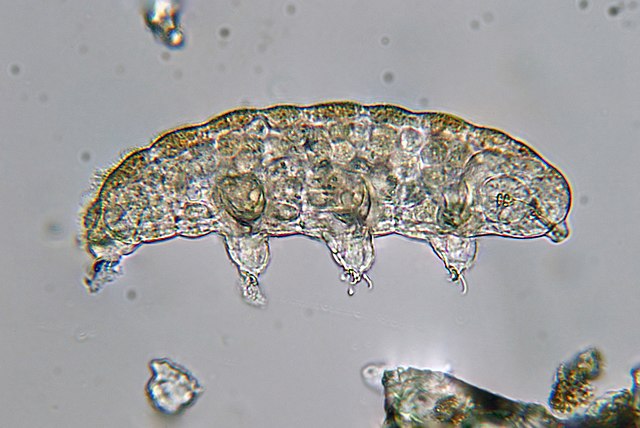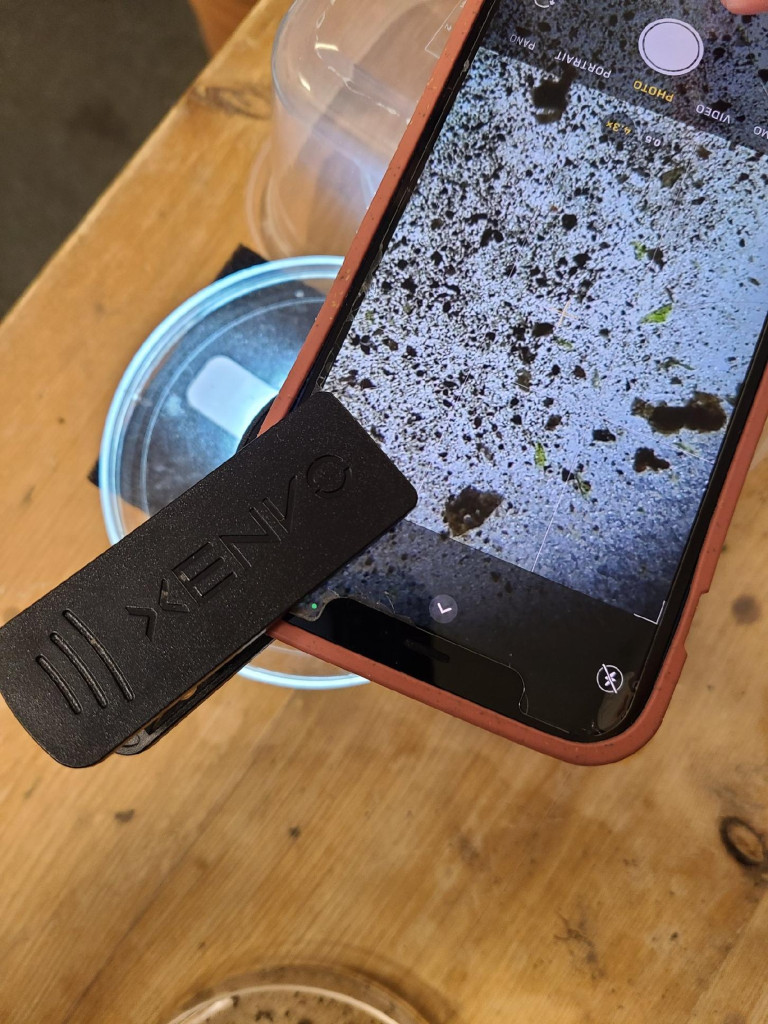
By Alie Mayes, Community Science Specialist
Tardigrades, also known as water bears or moss piglets, are a group of animals that are found almost everywhere on earth – including Nebraska! Now, you may be thinking, “If Tardigrades are so common, why have I never seen one?” It’s because tardigrades are tiny – very tiny — like half a millimeter tiny. That’s even smaller than the point of your pencil. On top of being minuscule, tardigrades are also hard to see because they are clear, but with the help of a microscope, we can get a better idea of what these animals look like.
Tardigrades are barrel-shaped animals. They have a head, mouth and four body segments. Each segment, or part, has a set of legs with claws at the end. The back pair of legs points in the opposite direction of the others. The tardigrades’ unusual legs are not for walking. They help the tardigrade grasp objects and aid in other types of movement.
While most microscopic creatures dart about in their environments, tardigrades are different. Their name describes how they move through their world. Tardigrade can be translated to “slow stepper” in Latin: tardus means slow and gradior means step. Tardigrades are generally found in wet environments. In Nebraska, tardigrades may be found living in moss, lichen and damp soils, and they eat mainly plants, bacteria and even other tardigrades.
Maybe the coolest thing about tardigrades is their ability to survive the most extreme conditions. Tardigrades are known as “nature’s pioneers,” able to live in harsh environments before the arrival of other types of animals. They have been known to survive in cold temperatures well below freezing and hot temperatures up to 300° F — hotter than boiling water! Once established, tardigrades become food for larger creatures that come after.
So, how can tardigrades survive such extreme conditions? They have the ability to get rid of over 90 percent of the water in their bodies. Then they curl up into tiny dried balls, entering into a “tun” state, where they remain dormant until conditions improve. It is important to note that not all species of tardigrades can survive such extreme conditions. Terrestrial tardigrades, those living on land, seem to be better able to handle these extreme changes.

How to View Tardigrades
So, you might be wondering how you can see one of these mini, yet mighty, creatures for yourself. Below are some steps you can follow in your quest.
Step 1: Collect Moss
Because tardigrades like moist environments, collecting small samples of moss and/or lichen can be a great place to start your search. The samples do not need to be larger than a quarter. Try collecting samples from different areas around your home to compare where you do and do not find tardigrades.
Step 2: Soak your Samples
Soak your samples in water for a minimum of 20 minutes so they are thoroughly saturated.
Step 3: Squeeze the Moss
After letting the moss soak, squeeze the water from the clumps into a small flat dish. Let the water sit for a few minutes until the dirt and debris settle.
Step 4: Look Carefully with Tools
Once the dirt has settled, look closely at the water in the dish. Because tardigrades are so small, magnifying tools will be necessary to help you in your search. A hand lens or magnifying glass might help. A clip-on macro lens for your cell phone or tablet is also a great tool to use in your search. Having a good light source is also crucial, especially if the light source can shined from underneath the container holding the sample, which would preferably be clear.
Step 5: Remember What You are Looking For
During your search, it is important to remember what you are looking for. Tardigrades are very small and often transparent. They amble slowly through their environment. In other words, they can be tricky to find. Be patient and try different methods of finding them.
Happy searching!
